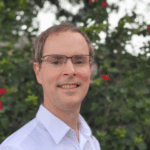Migrants to Australia are more vulnerable to hazards in the workplace than Australian-born workers, a Curtin study has revealed.
Working conditions for the 200 million migrants worldwide have been examined and found wanting in several industrialised countries, including the United States, Canada and Spain, but until now, the workplace safety of migrant workers in Australia had not been explored.
This is a significant oversight given the number of migrants working in Australia.
“Australia is a nation of migrants,” says Curtin Associate Professor Alison Reid, an expert on epidemiology and biostatistics. “Foreign-born workers make up thirty-five per cent of the current workforce.”
With funding from the Australian Research Council, Reid and her team are leading research in the field.
“Globally, the majority of migrant workers do the 3Cs – cooking, caring and cleaning – and 3Ds – dirty, dangerous and demeaning – jobs,” she says.
“We decided to explore the exposure of migrants to two types of workplace hazard in particular – carcinogens and psychosocial factors.”
Common workplace carcinogens include diesel engine exhaust and environmental tobacco smoke, while psychosocial hazards involve precarious work, bullying, racism, job strain and underemployment.
“We conducted three national surveys in several languages to see if there were variations in exposure among foreign and Australian-born workers,” she says.
Workers from Vietnamese, Chinese and Arabic-speaking backgrounds were contacted, as well as workers born in the Philippines, India and New Zealand and Australian-born workers of Caucasian ancestry.
The findings revealed significant differences in exposure levels.
“We found workers from Arabic-speaking backgrounds were twenty-two per cent more likely to be exposed to diesel engine exhaust than Australian-born workers in the same occupation,” she says. “This suggests the former are given the more hazardous tasks.”
“In addition, we found that forty per cent of workers who completed the interview in a language other than English were exposed to carcinogens, compared to twenty-nine per cent of English speakers.”
All groups reported exposure to psychosocial hazards, with workers from New Zealand, the Philippines and India citing low job security and Chinese workers reporting low levels of autonomy. Workers from the Philippines were found more likely to work as labourers, despite more than half completing tertiary education.
Reid also looked at fatalities and hospital admissions for work-related injuries and whether they differed by country of birth.
“In contrast to many other countries, we found that Australian-born workers are more likely to die from a work-related injury than workers from other countries,” she reveals.
“The only exception was men and women from New Zealand who are more likely to be killed from a work-related incident than Australian-born workers.”
The research also found that workers born in the United Kingdom, Italy and Germany were more likely to die from malignant mesothelioma than Australian-born workers.
“Workers from these countries most likely came to Australia as part of an Assisted Passage Scheme,” Reid explains. “They would have been placed in government-sponsored employment to build Australia’s infrastructure. These workers had to stay in these jobs, for a minimum period of two years, in order to migrate permanently to Australia.”
The Curtin researcher has identified a number of factors which influence the vulnerability of a migrant worker to occupational hazards. These include the migration process and the migrant’s education, skillset and English language proficiency.
“The receiving country is also a factor,” she says. “For example, whether the migrant’s right of stay in the country is contingent on a contract with one employer.”
The study’s findings highlight a lack of knowledge among migrants around their rights, entitlements and hazard identification. The research has led to SafeWork Australia launching a work area to examine occupational health and safety for migrant workers.
Reid says she is pleased with the results.
“All new arrivals to Australia now receive information about ways to work safely in Australia, translated into multiple languages,” she smiles. “There is more work to be done but we are moving in the right direction.”



